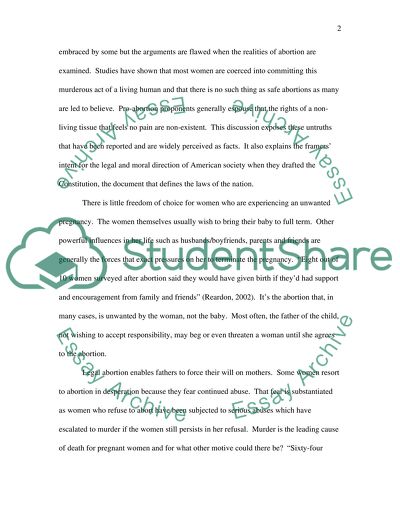Cite this document
(Should Abortion Be a Woman Decision Term Paper Example | Topics and Well Written Essays - 2000 words, n.d.)
Should Abortion Be a Woman Decision Term Paper Example | Topics and Well Written Essays - 2000 words. Retrieved from https://studentshare.org/social-science/1546249-should-abortion-be-a-woman-decision
Should Abortion Be a Woman Decision Term Paper Example | Topics and Well Written Essays - 2000 words. Retrieved from https://studentshare.org/social-science/1546249-should-abortion-be-a-woman-decision
(Should Abortion Be a Woman Decision Term Paper Example | Topics and Well Written Essays - 2000 Words)
Should Abortion Be a Woman Decision Term Paper Example | Topics and Well Written Essays - 2000 Words. https://studentshare.org/social-science/1546249-should-abortion-be-a-woman-decision.
Should Abortion Be a Woman Decision Term Paper Example | Topics and Well Written Essays - 2000 Words. https://studentshare.org/social-science/1546249-should-abortion-be-a-woman-decision.
“Should Abortion Be a Woman Decision Term Paper Example | Topics and Well Written Essays - 2000 Words”. https://studentshare.org/social-science/1546249-should-abortion-be-a-woman-decision.


